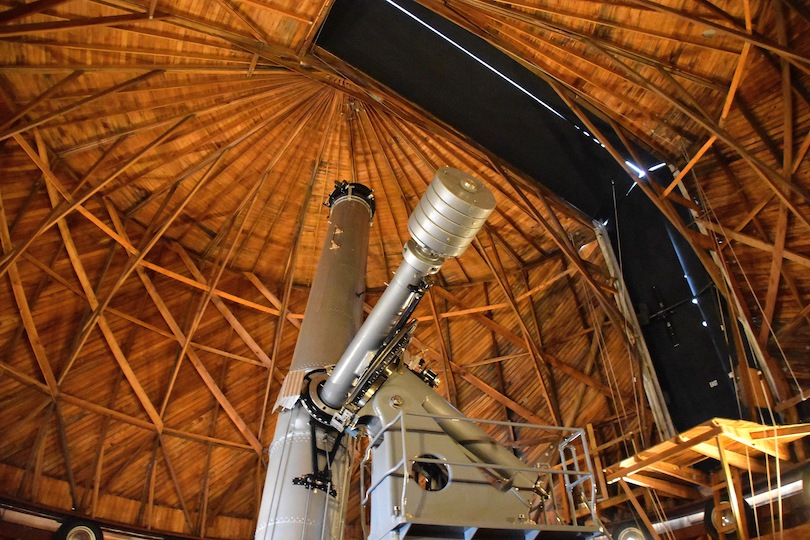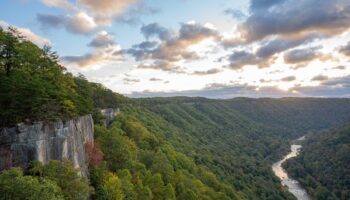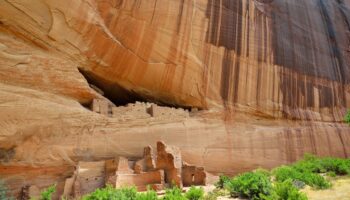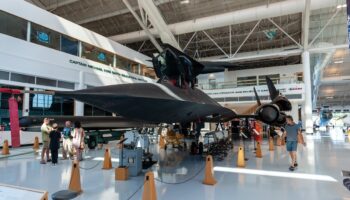Ever wondered what it feels like to see Saturn’s rings with your own eyes? Or maybe catch a glimpse of distant galaxies that make our earthly problems seem hilariously small? The U.S. happens to be home to some seriously impressive observatories where you can do exactly that.
Forget squinting at the night sky from your backyard – these spots have the kind of powerful telescopes that’ll blow your mind. Plus, most of them are staffed by astronomers who are actually excited to explain what you’re looking at (and won’t judge you for still not knowing your constellations).
8. Mount Wilson Observatory (LA, California)

Perched high above the LA smog at 5,700 feet, Mount Wilson Observatory is where astronomers first figured out that the universe is way bigger than anyone thought. While the city lights twinkle below, you can peek through the same historic telescopes that changed our understanding of space.
The 100-inch telescope here might be a century old, but it’s still a beast at showing off star clusters and galaxies. The best part? Despite being just an hour from downtown LA, the mountain location keeps light pollution surprisingly in check. Science nerds will love knowing they’re standing where Einstein once visited.
7. National Radio Astronomy Observatory (Socorro, New Mexico)

Don’t expect to look through any traditional telescopes here – this place is all about radio waves and giant satellite dishes. The Very Large Array (VLA) spreads across the desert like something out of a sci-fi movie (and yes, it’s been in plenty of them). Picture 27 massive dishes, each weighing hundreds of tons, all moving in sync to scan the cosmos.
While you can’t actually use the equipment, the visitor center lets you get up close to these massive space listeners. The surrounding desert landscape is so flat and empty, you’ll feel like you’ve landed on another planet. But bring your camera – these dishes against the New Mexico sky make for some killer photos!
6. Kitt Peak Observatory (Tucson, Arizona)

Sitting pretty on top of a mountain in the Sonoran Desert, Kitt Peak rocks the world’s largest collection of research telescopes in one place. We’re talking 24 telescopes scattered across a peak that rises 6,900 feet above prime stargazing territory. The drive up alone is worth it – you’ll climb nearly a mile into the sky through desert scenery that looks straight out of a Western.
Night programs here are legendary, letting you geek out with research-grade equipment while professional astronomers show you cosmic greatest hits like nebulae and star clusters. Just remember to pack a jacket – desert nights get surprisingly chilly.
5. McDonald Observatory (Fort Davis, Texas)

Everything’s bigger in Texas, including the views of the night sky. Thanks to some of the darkest skies in the continental U.S., this observatory lets you see the Milky Way so clearly it’ll make you thirsty. Nestled in the Davis Mountains, it’s far from any major cities – which means zero light pollution to mess with your star-spotting.
Their star parties are like the coolest science class you never had in school, with multiple telescopes set up for viewing different celestial objects. The daytime solar viewing programs are equally awesome – turns out the sun is way more interesting when you can safely look at it through specialized equipment.
4. Maunakea Observatory (Hawaii)

Want to stargaze from nearly 14,000 feet up? Maunakea’s got you covered – literally, because you’ll be above the clouds. This place is basically astronomy’s version of beachfront property, with some of the clearest skies on Earth. The altitude and isolation make it perfect for serious research, but visitors can still get in on the action at the visitor station.
While the summit observatories are off-limits (they’re busy doing actual science), the stargazing programs at 9,000 feet are still mind-blowing. But be warned, the thin air up here is no joke, so take it easy and drink plenty of water.
3. Griffith Observatory (LA, California)

This is the people’s observatory – the place where regular folks can get their space fix without leaving the city. Perched above Hollywood, it’s as much an LA icon as the sign itself. Sure, it’s not the darkest location for stargazing, but what it lacks in perfect viewing conditions it makes up for in accessibility and awesome programming.
The planetarium shows are top-notch, and the monthly star parties draw crowds for good reason. Plus, the building itself is pure Art Deco eye candy. Even if the marine layer rolls in (thanks, LA), the city views alone are worth the trip.
2. Oregon Observatory at Sunriver (Oregon)
Hidden away in the high desert of central Oregon, this place proves you don’t need a massive research facility to see amazing things in space. The super-clean air and high altitude make for some incredibly crisp views of the night sky.
What makes this spot special is how hands-on everything is – you actually get to control the telescopes yourself (with some guidance, of course). During the day, they’ve got special solar telescopes that let you spot sunspots and solar flares. The surrounding pine forest and mountain views don’t hurt either.
1. Lowell Observatory (Flagstaff, Arizona)

This is where Pluto was discovered (and yes, it’s still special even if it’s not officially a planet anymore). Flagstaff’s dark sky ordinances make it one of the best urban spots for stargazing in the country. The observatory blends historical charm with modern equipment – you can check out the telescope used to spot Pluto, then hop over to their newer instruments for views that’ll blow your mind.
The guides here are passionate about space without being pretentious, and they’re great at explaining complex stuff in ways that actually make sense. Between the history, the views, and the expert staff, it’s pretty obvious why this place tops the list.














Leave a Reply